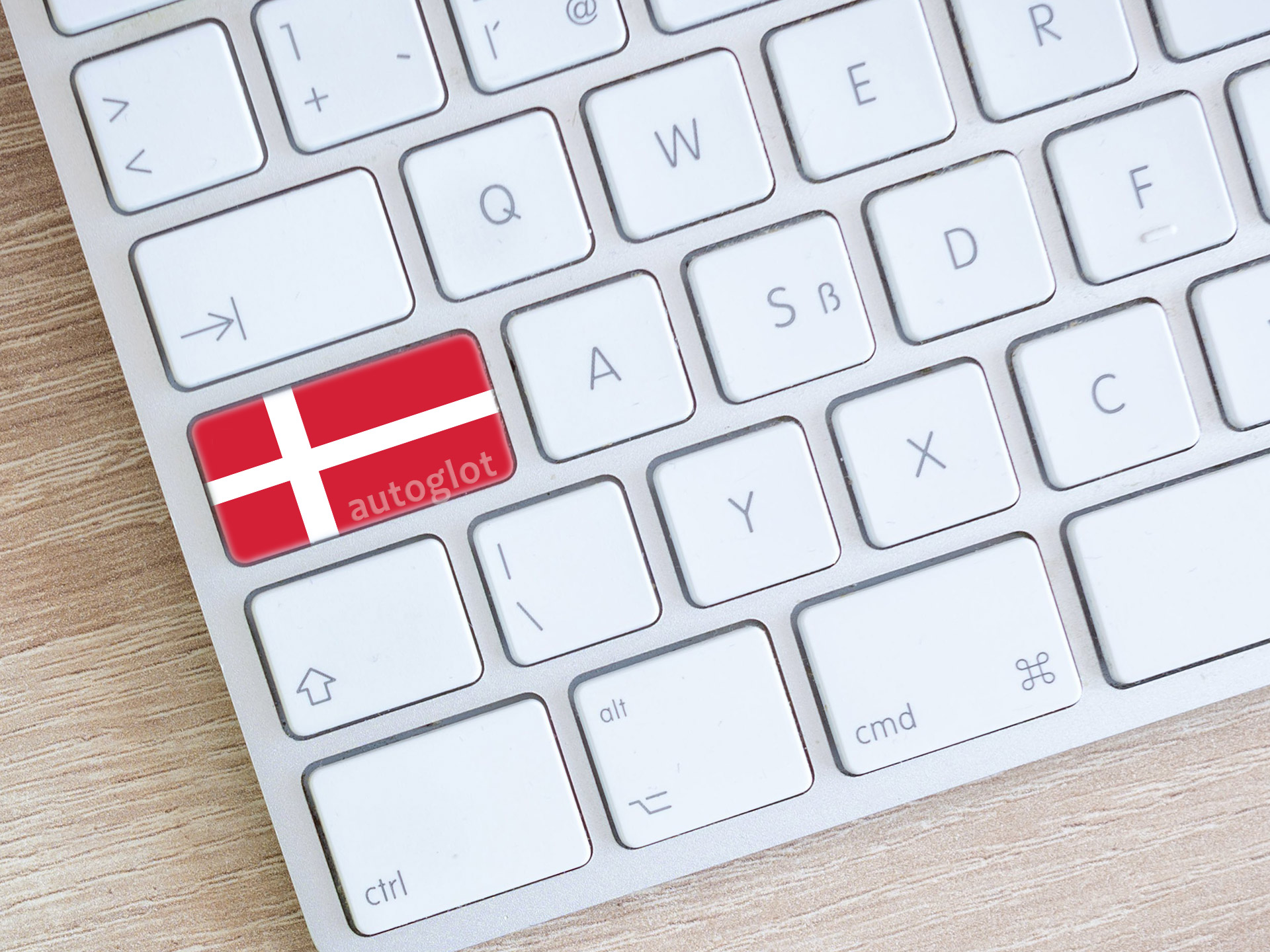
Значението на многоезичните уебсайтове не може да бъде надценено. Тъй като глобалният пазар се разширява експоненциално, фирмите и отделните лица осъзнават огромните ползи от достигането до публика на техните родни езици.
Един език, който има значително значение в контекста на създаването на многоезични уебсайтове, е датският.
Въведение в многоезичните уебсайтове и превод на датски
Датският, северно германски език, се говори от приблизително 6 милиона души по целия свят. Макар да се използва предимно в Дания, той също така притежава официален статус на Фарьорските острови и Гренландия, което го прави ключов език за тези, които се стремят да се ангажират с публиката в тези региони.
Датският език може да се похвали с богата история, датираща от епохата на викингите. През вековете той се е превърнал в отделна езикова единица, характеризираща се със своята уникална фонология, речник и граматика. Докато датският може да представлява някои предизвикателства за неговорещите езика поради сложните си гласни звуци и флективна морфология, сравнително ясният му синтаксис и граматика го правят достъпен език за изучаване.
За фирми и физически лица, които искат да навлязат в датско-говорящия пазар, наличието на локализиран уебсайт на датски е от съществено значение. Той не само демонстрира ангажимент за обслужване на датско-говоряща аудитория, но също така подобрява потребителското изживяване и насърчава доверието и надеждността.
Освен това, с нарастващото разпространение на датското съдържание в интернет, датската версия на вашия уебсайт може значително да разшири вашия онлайн обхват. Независимо дали сте мултинационална корпорация или малък бизнес, който иска да се разшири в международен план, превеждането на вашия сайт на WordPress на датски, отваря свят на възможности за растеж и успех.
Тази статия изследва процеса на превод на WordPress сайт на датски, като подчертава предимствата и предизвикателствата по пътя. Ще представим и мощен инструмент, AutoOglot WordPress Plugin Plugin, който предлага безпроблемно решение за автоматизиране на процеса на превод и гарантиране на вашия уебсайт говори ефективно на датската аудитория. Така че, нека да се задълбочим в света на датския превод и да открием как можете да отключите пълния потенциал на вашия сайт на WordPress на датско-говорящия пазар.
датски език
Датчанин, член на северногерманския клон на германските езици, заема уникална позиция сред своите езикови колеги. С корените си, дълбоко вградени в скандинавската история, датчаните са се развили през векове в език, който е както отличителен, така и завладяващ.

История на датския език
Историята на датския език може да бъде проследена до епохата на викингите, около 8 до 11 век. През това време старият норвежки, предшественикът на съвременните скандинавски езици, включително датски, норвежки и шведски, се говори в целия север. Докато норвежките заселници се разпространяват в региона, техният език постепенно се развива в това, което сега признаваме като датски.
През целия средновековен период датските претърпяха значителни промени, повлияни от контакт със съседни езици и диалекти. Въвеждането на християнството и приемането на латински сценарий допълнително оформя езика, което води до развитието на средния датски.
До 16 век датчаните са се утвърдили като доминиращ език на администрация, литература и култура в Дания и нейните територии. Стандартизацията на датския правопис и граматиката през този период постави основата на съвременния датски език, който познаваме днес.
Структура, лексика и граматика на датския език
Датските, подобно на други скандинавски езици, проявяват сравнително проста граматическа структура в сравнение с много други европейски езици. Той следва словоред субект-глагол-обект в повечето изречения, като съществителните се наклоняват за число и определеност.
- Една от най-отличителните черти на датския език е неговото произношение, характеризиращо се с широка гама от гласни звуци и уникален stød или glotal stop. Тези фонетични характеристики придават на датския мелодичност и ритмичност, което го отличава от другите германски езици.
- Речникът на датския език произлиза от различни източници, включително старонорвежки, долнонемски и латински. Въпреки че много думи може да изглеждат непознати за говорещите английски или други германски езици, датските учащи често намират общи черти и родствени думи, които улесняват усвояването на речник.
- Граматиката на датски е сравнително ясна, с малко прегъване на окончания в сравнение с езици като немски или латински. Датските съществителни имена са наклонени за брой и категоричност, докато глаголите се конюгират за напрежение и настроение. Използването на определени и неопределени статии също е видна черта на датската граматика, влияещо на реда и структурата на изреченията.
Като цяло, докато датчаните могат да представляват някои предизвикателства пред учащите, неговата богата история, уникална фонология и пряма граматика го правят интригуващ и възнаграждаващ език за изучаване и овладяване. Независимо дали сте привлечени от културното му наследство, неговите литературни традиции или съвременната му значимост, датчаните предлага езикови гоблен, който чака да бъде проучен и прегърнат.
Датски говорещи хора
Датският език, с корените си, дълбоко вградени в скандинавската история, има значение не само като езикова среда, но и като културен идентификатор за милиони хора по целия свят. Разбирането на демографските данни на датско говорещото население дава ценна представа за обхвата и влиянието на езика в различни региони и общности.

Население, което говори датски
Датския се говори предимно в Дания, където служи като официален език на страната. С население от приблизително 6 милиона души, Дания може да се похвали с жизнен езиков пейзаж, където датските служи като основен начин на комуникация както във формални, така и в неформални условия.
Освен в Дания, датско-говорящи общности могат да бъдат намерени и на Фарьорските острови и Гренландия, като и двете са автономни територии в рамките на Кралство Дания. Докато тези региони имат свои собствени различни културни идентичности, датският остава основен език за правителството, образованието и търговията.
Датско-говорящи страни
Въпреки че Дания, Фарьорските острови и Гренландия са основните региони, където се говори датски, езикът е уместен и в други части на света. Поради исторически връзки и модели на миграция, датско-говорящите общности могат да бъдат намерени в страни като Съединените щати, Канада, Швеция и Норвегия, наред с други.
Държави, в които датският е официален език
Освен Дания, датчанинът притежава официален статут на Фарьорските острови и Гренландия, където се използва в правителствените производства, образованието и медиите. Тези територии поддържат силна връзка с Дания, като същевременно запазват своите уникални културни идентичности, превръщайки датската неразделна част от тяхното езиково наследство.
Държави, в които хората говорят датски
В допълнение към региони, в които датските притежават официален статус, датско-говорящите общности могат да бъдат намерени в различни страни по света. Независимо дали поради историческата миграция, културен обмен или икономически възможности, датските говорители са създали живи общности в страни като САЩ, Канада, Австралия и Обединеното кралство.
Като цяло, докато датските може да са свързани предимно с Дания, влиянието му се простира далеч отвъд националните граници. От автономните територии до общностите на диаспората, датско говорещото население допринася за глобалното разнообразие от езици и култури, обогатявайки света със своите уникални перспективи и традиции.
Като такова, разбирането на демографията на датско говорещите хора хвърля светлина върху глобалния обхват и значението на този завладяващ език.
Датски в интернет: колко разпространен е?
Във все по -взаимосвързан свят интернет служи като шлюз към глобалната комуникация, търговия и култура. Като такова, присъствието на различни езици в интернет отразява многообразието и богатството на човешкото изразяване. Датският, със своето уникално езиково наследство и културно значение, играе жизненоважна роля в оформянето на цифровия пейзаж и свързването на датско-говорящите общности по света.

Колко широко разпространен е датският в интернет
Въпреки че датският може да не е толкова широко разпространен като някои други езици в интернет, той все пак поддържа значително присъствие в цифровата сфера. Уебсайтовете, обслужващи датската публика, обхващат широк спектър от теми, включително новини, развлечения, електронна търговия и образование. Датските потребители се ангажират с онлайн съдържание на родния си език, търсейки информация, забавление и социално взаимодействие на датски.
Освен това датското правителство и различни организации активно насърчават дигиталната грамотност и онлайн услугите на датски език, като гарантират, че говорещите датски имат достъп до основни ресурси и информация онлайн. От официални правителствени уебсайтове до образователни платформи и социални медийни мрежи, датското съдържание е лесно достъпно за тези, които искат да се ангажират с онлайн света на родния си език.
Защо е важно да имате датска версия на вашия уебсайт
За фирми и физически лица, които се стремят да достигнат до датскоговорящи аудитории, наличието на датска версия на уебсайта им е от съществено значение. Той не само демонстрира ангажимент да обслужва датските потребители, но също така подобрява потребителското изживяване и улеснява комуникацията на предпочитания от тях език. Като предоставят съдържание на датски, собствениците на уебсайтове могат ефективно да се ангажират с датската публика, да изградят доверие и надеждност и в крайна сметка да стимулират трафик и реализации.
Освен това наличието на датска версия на вашия уебсайт може да подобри вашата видимост и уместност на датско-говорящите пазари. Търсачките дават приоритет на локализираното съдържание, което означава, че е по-вероятно уебсайтовете на датски да се показват в резултатите от търсенето за заявки на датски език. Това може значително да повиши вашата онлайн видимост и да привлече датски потребители, които активно търсят продукти, услуги или информация на датски.
Присъствието на датски език в интернет подчертава значението на обслужването на датскоговорящата аудитория онлайн. Независимо дали сте бизнес, който иска да се разшири на датските пазари, или физическо лице, което иска да се свърже с датските общности, наличието на датска версия на вашия уебсайт е от решаващо значение за успеха в дигиталната ера.
Прегръщайки датския език и култура онлайн, можете да се включите в жизнена и динамична общност от говорещи датски език и да отключите нови възможности за растеж и ангажираност.
Как да преведете WordPress сайт на датски
Преводът на сайт на WordPress на датски отваря свят от възможности за достигане до датско-говорящи аудитории и разширяване на вашето онлайн присъствие. Независимо дали сте бизнес, който иска да навлезе на датския пазар, или отделен блогър, който иска да се свърже с датски читатели, предлагането на вашето съдържание на датски може значително да подобри потребителското изживяване и ангажираност.
Ето някои основни начини за превод на WordPress сайтове на датски и представяне на приставката за превод Autoglot WordPress като мощен инструмент за автоматизиране на процеса на превод.
- Ръчен превод. Един традиционен подход за превод на WordPress сайт на датски е чрез ръчен превод. Това включва наемането на професионални преводачи или сами да извършвате превода, като ръчно превеждате всяка страница, публикация и елемент от уебсайта си на датски. Въпреки че ръчният превод гарантира точност и качество, той може да отнеме много време и ресурси, особено за по-големи уебсайтове с обширно съдържание.
- Използване на добавки за превод. Друга възможност за превод на WordPress сайтове на датски е чрез използване на добавки за превод. WordPress предлага разнообразие от плъгини за превод, които ви позволяват да превеждате съдържанието на уебсайта си на множество езици, включително датски. Тези плъгини обикновено предоставят удобен за потребителя интерфейс за управление на преводи, което ви позволява лесно да превеждате страници, публикации, менюта и други елементи от вашия уебсайт.
- Приставка за превод на WordPress Autoglot. Една отличителна опция сред добавките за превод е приставката за превод Autoglot WordPress. Autoglot предлага уникално решение за автоматичен превод на вашия WordPress сайт на датски и други езици, елиминирайки необходимостта от ръчен превод или множество добавки.
Защо AutoGlot? Основни предимства на автоглот
Autoglot използва усъвършенствана технология за машинен превод, за да преведе бързо и точно съдържанието на вашия уебсайт. С поддръжка на над 100 езика, включително датски, Autoglot гарантира, че уебсайтът ви говори ефективно на датската аудитория, улавяйки нюансите и нюансите на датския език.
Освен това Autoglot се интегрира безпроблемно с вашия WordPress сайт, което ви позволява да преведете целия си уебсайт само с няколко кликвания. Плъгинът автоматично разпознава езика на всяка страница и я превежда на датски, запазвайки оформлението и форматирането на вашето оригинално съдържание.
Като използвате силата на Autoglot, можете да спестите време и ресурси за усилия за превод, като същевременно гарантирате, че уебсайтът ви ще се хареса на датската публика. Независимо дали превеждате малък блог или голям сайт за електронна търговия, Autoglot предлага надеждно и ефикасно решение за достигане до датски потребители и разширяване на вашия онлайн обхват.
Преводът на WordPress сайт на датски отваря нови възможности за ангажираност и растеж на датско-говорящите пазари. Независимо дали избирате ръчен превод, традиционни плъгини за превод или иновативни решения като Autoglot, инвестирането в превод на датски може да ви помогне да се свържете с датската публика, да изградите доверие и надеждност и в крайна сметка да постигнете своите онлайн цели.
Стъпка по стъпка ръководство за превод на сайт на WordPress на датски
Преводът на вашия WordPress сайт на датски е лесен процес, особено с помощта на добавки за превод като Autoglot. В това ръководство стъпка по стъпка ще ви преведем през процеса на превод на вашия WordPress сайт на датски с помощта на Autoglot, от инсталирането до проверката на резултатите от автоматичния превод.
Стъпка 1. Инсталиране и активиране на плъгини.
- Първата стъпка е да инсталирате и активирате приставката за превод Autoglot WordPress на вашия уебсайт.
- Можете да направите това, като отидете до секцията „Добавки“ в таблото за управление на WordPress, щракнете върху „Добавяне на нов“ и потърсите „Autoglot“.
- След като намерите приставката, щракнете върху „Инсталиране сега“ и след това върху „Активиране“, за да активирате приставката на вашия сайт.
Можете също така да изтеглите Autoglot директно от официалното хранилище на добавки на WordPress.
Източник
Стъпка 2. Регистрация в контролния панел на Autoglot
- След като активирате приставката Autoglot, ще трябва да се регистрирате за акаунт в контролния панел на Autoglot.
- Можете да направите това, като щракнете върху менюто „Autoglot“ в таблото за управление на WordPress и изберете „Настройка“.
- Оттам кликнете върху връзката „Регистрация“ и следвайте подканите, за да се регистрирате за акаунт.
Контролният панел на Autoglot ви позволява да контролирате разходите си за превод, да проследявате използването и да поръчвате нови пакети за превод.
Източник
Стъпка 3. Конфигуриране на плъгин
- След като се регистрирате за акаунт, ще трябва да конфигурирате настройките на приставката Autoglot, за да преведете уебсайта си на датски.
- В настройките на Autoglot отворете раздела „Настройки“ и въведете своя безплатен API ключ от контролния панел на Autoglot.
- Можете също така да персонализирате други настройки, като превключване на език, предпочитания за флагове и др.
Стъпка 4. Избор на датски между езиците
- След като конфигурирате настройките на приставката, можете да започнете процеса на превод, като изберете датски като целеви език за превод.
- Просто навигирайте до страницата или публикацията, която искате да преведете, и ще видите съдържанието, преведено на датски с помощта на Autoglot.
Стъпка 6. Проверка на резултатите от автоматичния превод
- След като процесът на превод приключи, важно е да прегледате резултатите, за да гарантирате точност и качество.
- Въпреки че Autoglot предоставя точни преводи, винаги е добра идея да проверите отново преведеното съдържание за грешки или несъответствия.
- Можете да направите това, като прегледате преведените страници или публикации на уебсайта си и направите необходимите корекции.
Като следвате тези прости стъпки, можете да преведете своя WordPress сайт на датски бързо и ефективно с помощта на приставката за превод Autoglot WordPress. Независимо дали сте бизнес, който иска да достигне до датска аудитория, или отделен блогър, който иска да се свърже с датски читатели, Autoglot предлага надеждно и удобно решение за превод на вашия уебсайт на датски и разширяване на вашия онлайн обхват.
Заключение: Предизвикателства и ползи от превеждането на сайтове на WordPress на датски
Преводът на вашия WordPress сайт на датски предлага множество предимства, от разширяване на вашия онлайн обхват до подобряване на потребителското изживяване и ангажираност с датско-говорещите аудитории. Тази статия изследва значението на обслужването на датската аудитория онлайн и предоставя представа за демографията на датско-говорещото население по света.
Това също така подчерта значението на датския език в интернет и защо наличието на датска версия на вашия уебсайт е от съществено значение за свързване с датски потребители и постигане на вашите онлайн цели. Независимо дали сте бизнес, който иска да се докосне до датските пазари, или физическо лице, което иска да се свърже с датските общности, преводът на вашия WordPress сайт на датски е стратегически ход, който може да донесе значителни дивиденти по отношение на видимост, достоверност и ангажираност.
Препоръчваме приставката за превод Autoglot WordPress като мощен инструмент за автоматизиране на процеса на превод и осигуряване на точни и ефективни преводи на съдържанието на вашия уебсайт на датски.
С Autoglot можете безпроблемно да преведете своя WordPress сайт на датски и да достигнете с лекота до датска, както и до световна публика, спестявайки време и ресурси за усилия за превод.
Източник
Следвайки ръководството стъпка по стъпка, предоставено в тази статия, можете да преведете своя WordPress сайт на датски бързо и ефективно, отключвайки нови възможности за растеж и успех на датско-говорящите пазари. Независимо дали превеждате малък блог или голям сайт за електронна търговия, Autoglot предлага надеждно и ефикасно решение за достигане до датски потребители и разширяване на вашия онлайн обхват.
В заключение, преводът на вашия WordPress сайт на датски е стратегическа инвестиция, която може да се изплати по отношение на повишена видимост, ангажираност и процент на реализация. Като възприемате датския език и култура онлайн, можете да се свържете с датската аудитория, да изградите доверие и надеждност и в крайна сметка да постигнете своите онлайн цели. Защо да чакаме? Направете първата стъпка към достигане до датските потребители днес и тръгнете по пътя на успеха на датско-говорящите пазари с Autoglot.



